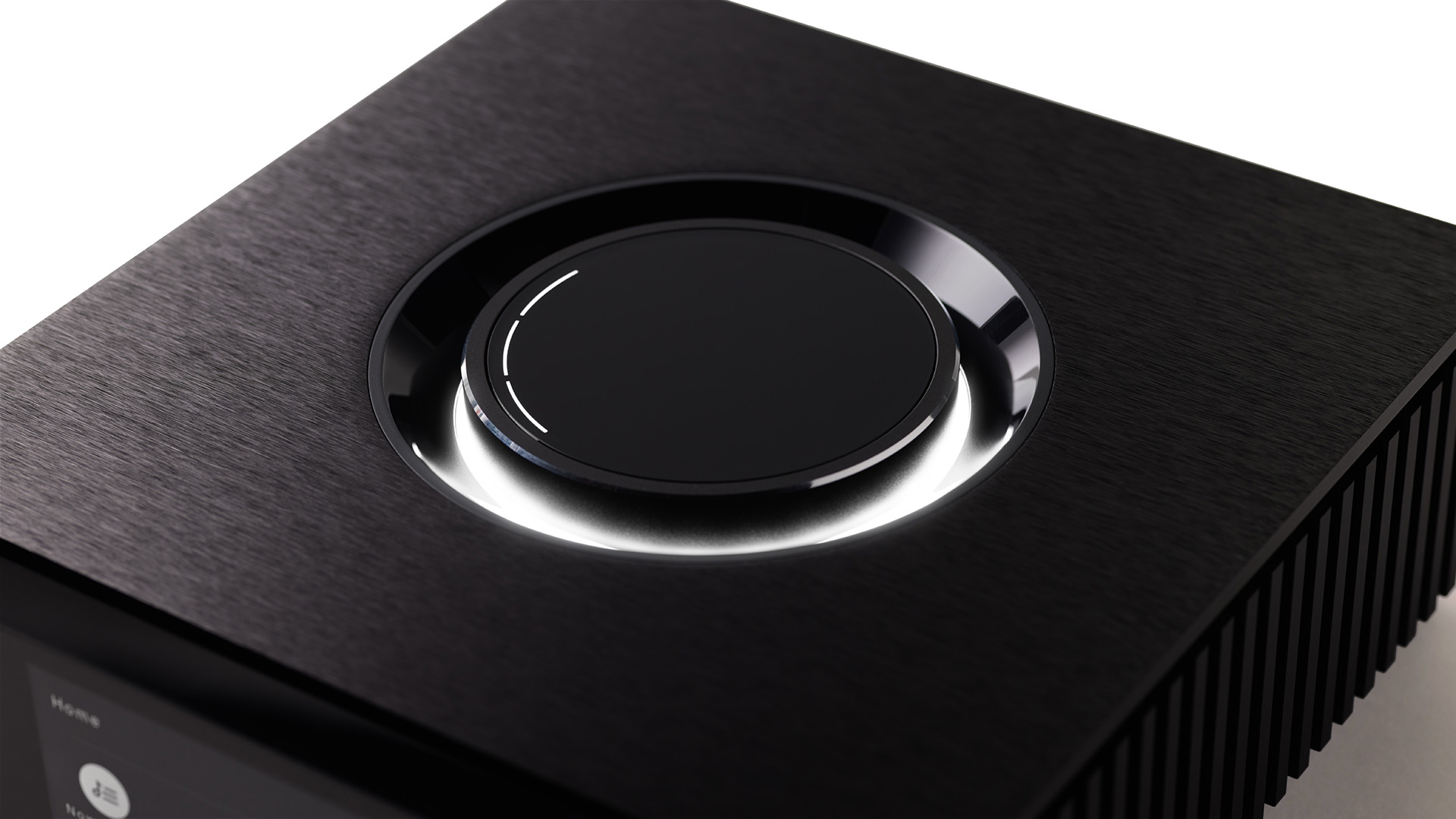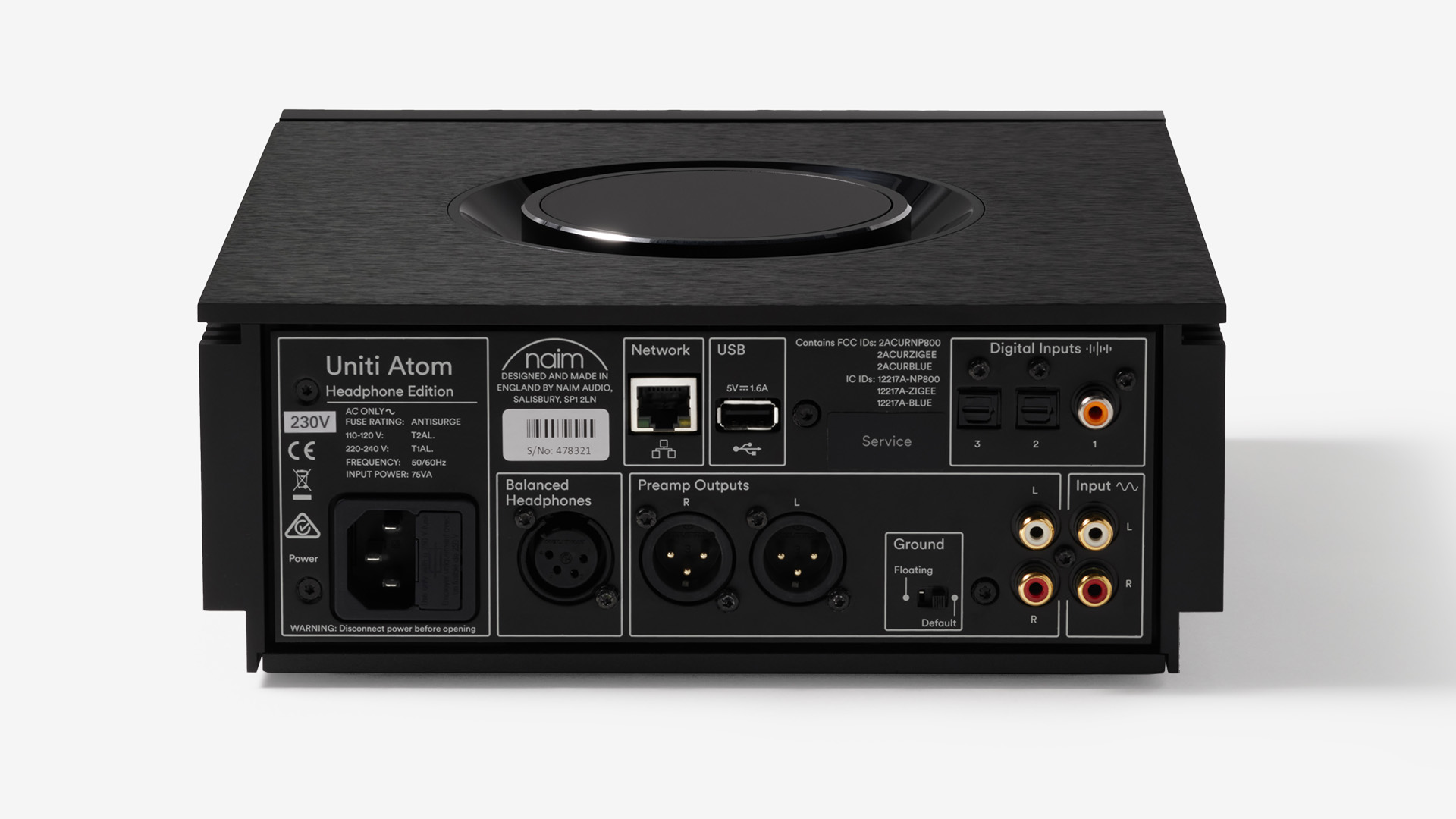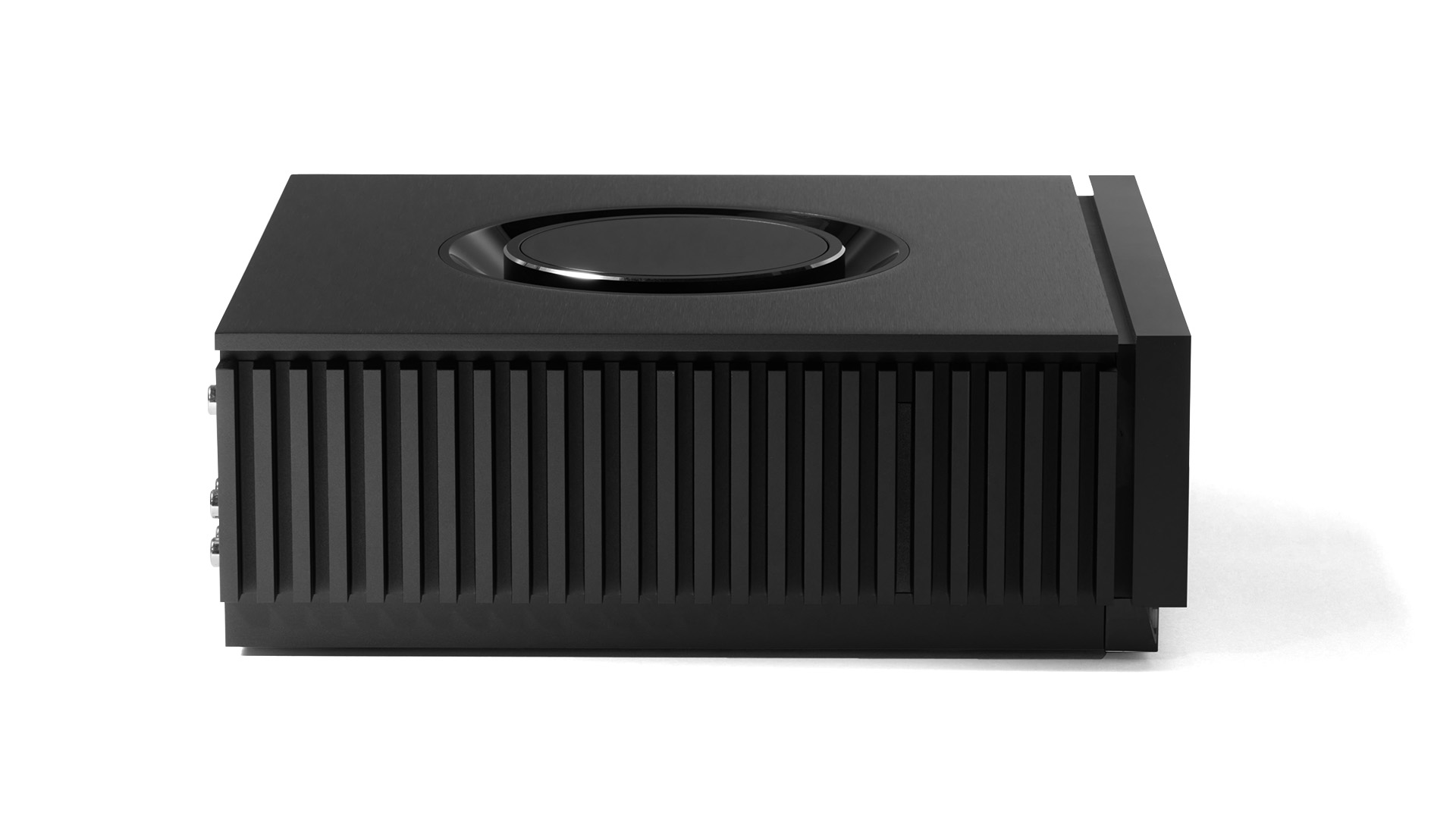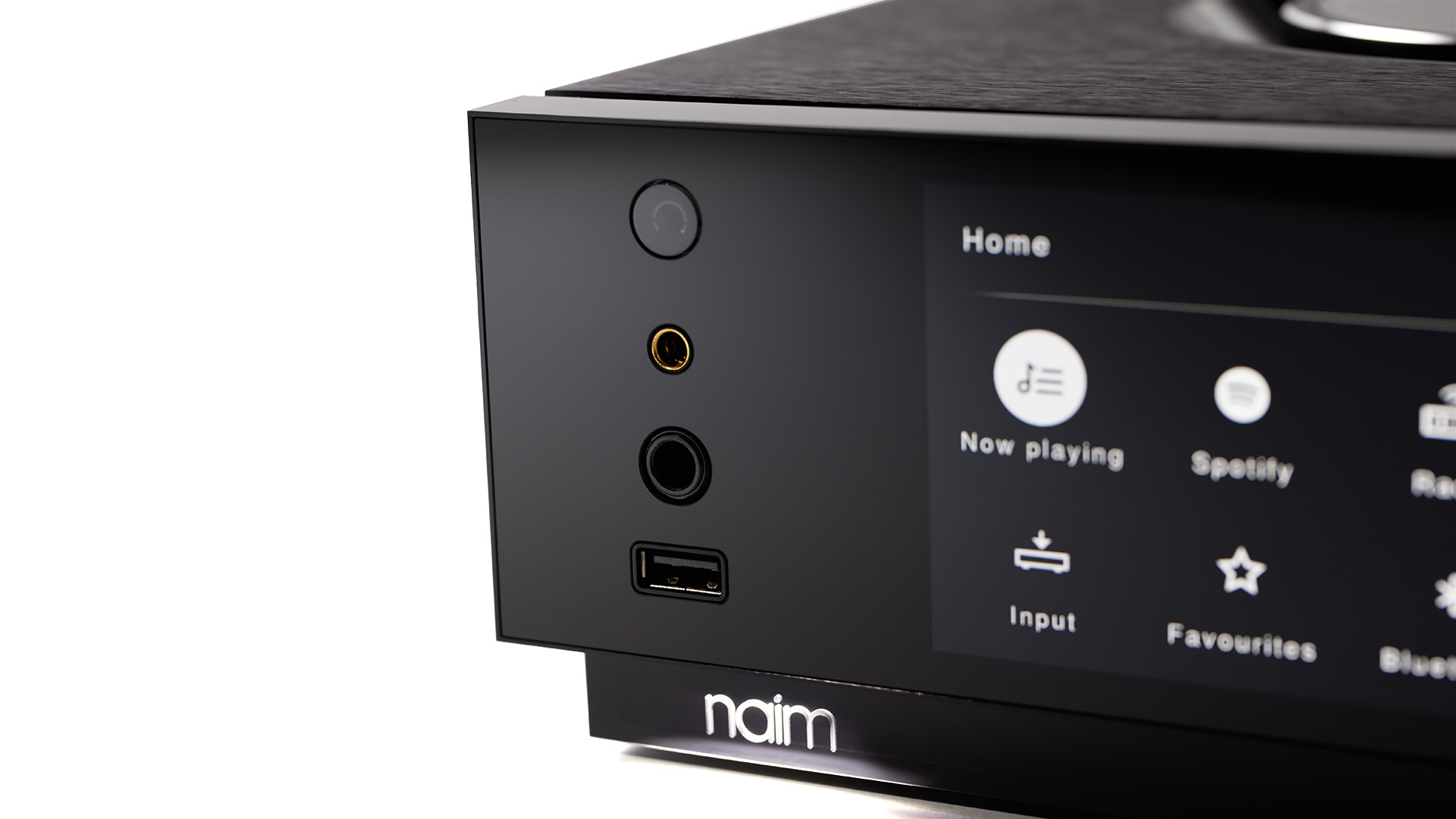What Hi-Fi? Verdict
A unique but no less successful addition to Naim’s Uniti range, ideal for those who prioritise listening with headphones
Pros
- +
Several headphone outputs
- +
Excellent detail levels
- +
Innately musical
Cons
- -
Nothing of note
Why you can trust What Hi-Fi?
Here at What Hi-Fi?, we’re the last to need convincing of the value of a fully-fledged hi-fi system – the sight and sound of a handsome pair of stereo speakers, fed by a revealing amp connected to an entertaining source, filling the room with a cherished collection of music.
But we also know there’s nothing quite like the intimate experience of putting on a pair of decent headphones and having your music right there, in your head, with no distractions. And if that’s your preferred route to audio nirvana, Naim’s latest Uniti system might well be the box of tricks for you.
Build

The Uniti Atom Headphone Edition is a headphones-based version of the Uniti Atom, the entry-level machine in Naim’s What Hi-Fi? Award-winning Uniti just-add-speakers streaming system range.

Outputs preamp RCA and XLR, Pentaconn 4.4mm, XLR, 6.3mm
Inputs Coaxial, optical x2, RCA, USB x2, ethernet
Bluetooth Yes, aptX HD
AirPlay 2 Yes
Google Chromecast Yes
Dimensions (hwd) 9.5 x 24.5 x 26.5cm
Weight 7kg
The Headphone Edition simply swaps the original Uniti Atom’s speaker outputs and 3.5mm headphone socket for a series of headphone connections – 6.3mm, balanced 4-pin XLR and balanced 4.4mm Pentaconn.
The Headphone Edition doesn’t just build on the Atom’s solo headphone jack by bringing more choice to the headphones user, though. Naim says it has also been ‘fully engineered’, benefitting from improved discrete headphones amplification, using technology trickled down from the company’s flagship Statement amplifier.
Naim has also enhanced the preamp section, so while many might understandably see this new Atom’s home on a desktop, RCA and balanced XLR preamp outputs mean that it could just as easily slip into a speaker system, connected either to a power amplifier or pair of active speakers.
The Atom's internals are based around an all-new discrete transistor circuit design, too, with a new transformer design providing power to the amplification stages. Otherwise, it’s very much the Atom we know and love – same stylish aesthetic, vast streaming features and intuitive app usability.
The latest hi-fi, home cinema and tech news, reviews, buying advice and deals, direct to your inbox.
Features

As with the increasing number of streaming systems on the market, the idea behind Naim’s Uniti systems is to offer a whole host of network streaming from one box, plus aptX HD Bluetooth and physical inputs (two optical, two USB, one coaxial) to cater for external sources. And this Uniti Atom is as impressively equipped for its purpose as the rest.
The Naim app is a useful gateway to Qobuz and Tidal music services as well as internet radio stations. It’s also where, thanks to the Atom’s UPnP support, you can browse and playback music up to 32-bit/384kHz stored on servers on your network.
We have used the Naim app for many years – we use the Naim ND555/555 PS DR music streamer in our reference system, after all – but newcomers to the software shouldn’t struggle to get to grips with its mobile or tablet interface, which we find to be stable and one of the most intuitive around.
Navigating and browsing large music libraries is a breeze, and we rarely find ourselves reaching for the remote control. However, we can’t help getting up from our listening position to roll the large on-unit volume rotary dial, the centerpiece of a design that is lovely to use.

Google Chromecast compatibility isn’t just an alternative method of accessing music services directly from their native apps, it also expands service support to the likes of Spotify (there’s also Spotify Connect), Apple Music, Deezer and TuneIn Radio. Apple AirPlay 2 offers seamless streaming from iOS devices, while Roon Ready status means it can be controlled within the popular multi-room music management platform.
The Naim app facilitates multi-room grouping with up to four other streaming systems from Naim, such as other Uniti models or Mu-so wireless speakers. And AirPlay and Chromecast allow multi-device operability with compatible kit too.
Perhaps unsurprisingly, there’s no optional HDMI ARC socket for accommodating a TV hook-up. And while Tidal is by no means the only streaming service offering hi-res audio, subscribers should be aware that, at the time of writing, the Uniti Atoms don’t support the MQA (Masters Quality Authenticated) technology that powers its hi-res Tidal Masters catalogue.
It’s hard to feel hard done by, though; by streaming system standards, the Uniti Atom Headphone Edition is extensively equipped.
Testing the Uniti Atom Headphone Edition seems like the ideal opportunity to pluck some of our favourite headphones off the shelf. After unboxing the Naim, we plug in the Focal Stellia, Beyerdynamic T1 (3rd Gen) and open-back Grado SR325x over-ears into the unit’s front-panel 6.3mm socket. During testing, we also try out the Focal Clear Mg and Sennheiser IE900 earbuds in the Atom’s rear-panel balanced XLR and front-panel 4.4mm Pentacon connections respectively.
Sound

The Atom HE is a clear descendent of the Atom, the strong gene pool characterised by impressive insight, dynamism and musicality. But thanks to the developments Naim has made to justify the existence of a headphone edition, the new model is a next-level performer in more ways than one.
What’s immediately apparent is how the Atom HE’s presentation opens up over the Atom, allowing for greater separation of instruments and extra space for even more superb levels of detail to fill. More refinement takes away some of the original Atom’s comparative crudeness and directness, and that goes hand-in-hand with a greater sense of control to create a more sophisticated soundstage. The headphones we use in testing have different characters and demands, and the Naim confidently feeds each with power and poise.
We play The Tallest Man on Earth’s There’s No Leaving Now and the Atom HE offers a notably wider window into the recording. Compared with the original Atom, there is extra subtlety to get under the texture and dynamic lilts of the piano keys, while also peeling another layer or two from his nasal vocals. Its extra insight better communicates the atmosphere of the production – the distant creaks of the space he’s recording in and the slight echo around his vocal. And the piano chords that later join to ride beneath his delivery are that bit more shapely, too. It’s a thoroughly enjoyable headphone experience.
Switching to Ludovico Einaudi's Night, the Atom HE’s rendition captures the broader soundscape in which sounds pepper themselves precisely across your headspace, making it all the more involving to listen to. Notes are better defined and more crisply etched, a bit more fleshed out and solid in their placement. As we move to something punchier, such as Kanye West’s Blood On The Leaves, we’re reminded of the Uniti family’s penchant for timing and dynamics, the ornate, sampled-based instrumental utterly compelling as the Naim delivers it with the musical cohesion it demands.
It’s a similar story through the preamp as we take turns connecting the Uniti Atom and Uniti Atom HE to our reference Burmester 911 Mk3 power amp and ATC SCM50 speakers, the sonic gains brought by the newer model’s tweaks laid bare to hear. The soundstage is broader and more refined, detail levels go up a notch, and rhythmically things are that bit tighter and more disciplined.
These sonic advancements improve upon a performer that is still a class leader in its more traditional field, making this an even more impressive achievement.

Verdict
The Naim Uniti Atom Headphone Edition is a more niche product than its original Atom sibling and no less expensive, and for that, it won’t have as much universal appeal. But for anyone looking to unleash the potential of a premium pair of headphones with a multifaceted streaming system, either to use purely as a desktop centerpiece or to also slip into an existing hi-fi system, it’s bound to hit the spot.
SCORES
- Sound 5
- Features 5
- Build 5
MORE:
Read our guide to the best streaming systems
Read our Naim Uniti Atom review
Check out our pick of the best audiophile headphones 2021
What Hi-Fi?, founded in 1976, is the world's leading independent guide to buying and owning hi-fi and home entertainment products. Our comprehensive tests help you buy the very best for your money, with our advice sections giving you step-by-step information on how to get even more from your music and movies. Everything is tested by our dedicated team of in-house reviewers in our custom-built test rooms in London, Reading and Bath. Our coveted five-star rating and Awards are recognised all over the world as the ultimate seal of approval, so you can buy with absolute confidence.

